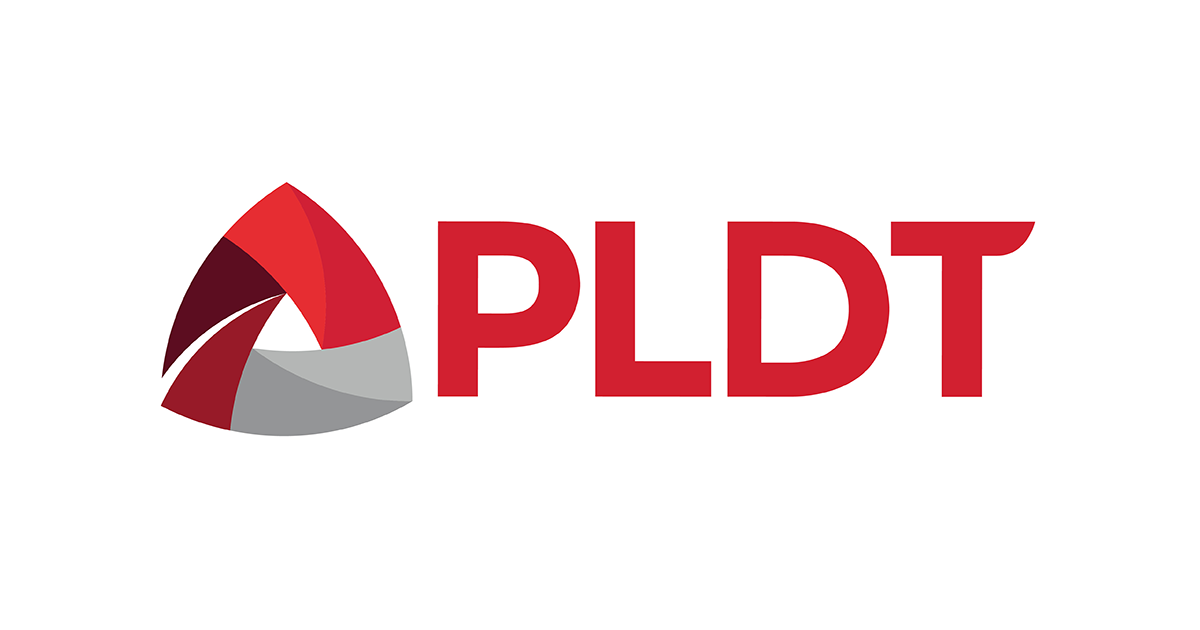
Mid-way through its historic five-year P260 billion capital expenditure (capex) program (2016-2020), telecoms leader PLDT (PSE:TEL) (NYSE:PHI) is accelerating its efforts to transform, modernize and expand its fixed and mobile networks to bring world-class communications, Internet and digital services to the country.

In 2018, PLDT’s capex will well exceed P50 billion, and is expected to stay at that level over the next two years. That would bring the Group’s total capex from 2016 — the year PLDT embarked on its network and IT transformation programs — to nearly P260 billion, or approximately US$5 billion (at current exchange rates). This is on top of the nearly P175 billion or US$3.4 billion of capex that PLDT invested in network building in the immediately preceding five-year period (2011 to 2015).
"What this means is that for every P1 of service revenue, we reinvest between P0.30-0.35 in the business to super-charge our networks and advance our digital transformation program. This is a massive effort to turn our networks into powerful, pervasive and resilient platforms for delivering relevant digital services and solutions that our people can use to improve their daily lives, as well as enable the country to compete and thrive in this digital age,” said PLDT Chairman and CEO Manuel V. Pangilinan.
“Aside from building vital digital infrastructure, the PLDT Group is doing its share of nation building through the payment of taxes. In 2011-2016, PLDT and its subsidiaries paid a total of P206.9 billion in various forms of taxes,” Pangilinan added.
MAJOR ADVANCES IN 2016-2017
Taking the lead in LTE
In mobile, PLDT wireless unit Smart Communications is utilizing its capex to roll out aggressively more LTE and 3G base stations to provide high-speed mobile broadband to over 90% of the country's cities and municipalities by 2018. Doing so will put PLDT’s wireless brands Smart, Sun and TNT back on the growth path, and enable them to take market leadership in mobile data services.
Working with world-leading technology partners, Smart has accelerated its deployment of Long Term Evolution or LTE, the fourth-generation mobile technology also known as 4G. After extensive preparatory work in 2016, Smart more than doubled the number of LTE base stations in 2017 to over 8,700 from the previous year, and increased the number of cell sites equipped with LTE base stations by about 60% to over 4,300.
To complement its LTE deployment, Smart also added more 3G base stations in 2017, raising the total to about 9,850. It also increased the number of cell sites equipped with 3G base stations to about 7,500.
Base stations refer to the radio equipment that operate on a specific frequency band such as 700 Mhz, 1800 Mhz or 2100 Mhz. Cell sites refer to the towers or structures that house several of these bases stations.
Smart also improved its signal coverage inside high-rise buildings through the installation of Indoor Building Solutions (IBS) in over 100 structures in 2017.
In this massive LTE and 3G deployment, Smart is extensively using the radio frequencies that it has gained access to through the acquisition of the telecoms business of San Miguel Corporation (SMC). These include the valuable low-band 700 MHz and 900 Mhz frequency bands which provide better reach and indoor coverage, as well as the 1800 Mhz and 2300 Mhz bands which deliver additional capacity. The number of base stations using these frequencies reached over 2,000 in 2017 and will more than triple to nearly 9,000 base stations by end-2018 or early 2019 latest. Currently, these frequencies are already serving around 24 million Smart, TNT and Sun subscribers in various parts of the country.
The impact of Smart’s accelerated LTE network roll-out is evident in the rising LTE data traffic nationwide which by end-2017 grew 204% compared to the previous year. The number of LTE devices being used in the Smart network doubled in the same period.
World-class mobile Internet through LTE-Advanced
Smart’s expanding use of multiple frequencies for LTE is enabling it to provide even faster Internet connections through the accelerated roll-out of carrier aggregation (CA) through LTE-Advanced (LTE-A). LTE-A delivers even higher data speeds by combining the capacity of two or more frequency bands by way of carrier aggregation.
Internal speed tests done by Smart in Metro Davao and Metro Cebu show the initial impact of the roll-out of LTE and LTE-A in these metropolitan areas. Metro Davao posted an average download speed of 34 Mbps and peak download speed of 101 Mbps. For Metro Cebu, the figures are 24 Mbps and 88 Mbps, respectively.
The early results of Smart’s network improvement efforts have shown up in recent reports of OpenSignal, the international wireless coverage research firm. Using crowd-sourced data from September to November last year, the OpenSignal Report stated that Smart has established “clear leadership” in LTE/4G, with nationwide average LTE download speeds of 11.7 Mbps versus 7.3 Mbps for the competitor.
OpenSignal also highlighted how deploying LTE-A will enable operators like Smart to deliver world-class mobile Internet service. In an earlier report, OpenSignal pointed out that countries with the fastest mobile data speeds “tend to be ones that have built LTE-A networks and have a large proportion of LTE-A capable devices.”
In 2017, Smart stepped up its efforts in that direction. Working with Huawei, Smart fired up four-component (4CC) LTE-A carrier aggregation base stations, first in Boracay in August, and then in Marikina City in November. 4CC enables the use of four frequency bands simultaneously, thus providing much higher data speeds and capacities. As a result, the speed test results in Marikina are even more striking. The average download speed, using 4CC-capable handsets, reached 64 Mbps, with a peak spmajoeed of 240 Mbps.
This improvement in LTE capacity has boosted LTE traffic in Marikina, for example, by about 50% in the three months ending January 2018.
Delivering super-fast mobile data
Smart is deploying another LTE-A based technology that will also boost the speed and capacity of its mobile data service. Called 4x4 Multiple Input, Multiple Output (MIMO), this technology boosts the efficiency of available radio frequencies by using multiple antennas for transmitting and receiving radio signals. This technology is particularly useful for serving areas where the population of mobile phone users is highly concentrated. Internal tests have produced very promising results — download speeds of up to 400 to 500 Mbps on a live network using MIMO-capable handsets such as Samsung Galaxy S8 and S8+ smartphones.
Carrier aggregation and 4x4 MIMO work in tandem and when combined can eventually raise mobile data speeds to near gigabit levels. With Huawei, Smart is now rolling out both technologies in Metro Manila, starting with Marikina and Quezon City.
In several areas of Quezon City where the network upgrade work has been substantially completed, the initial results of internal speed tests conducted in early February 2018 produced promising results: the median download speed using 2CC-capable handsets (Samsung Galaxy S5) was 59 Mbps. The corresponding median download speeds for 3CC-capable handsets (Samsung S7) and 4CC-capable handsets (Samsung S8) were 169 Mbps and 190 Mbps. In Marikina, the corresponding speed test results were: 55 Mbps for 2CC handsets, 115 Mbps for 3CC devices and 142 Mbps for 4CC phones.
Fiber-fast Internet for homes and businesses
Over the past two years, PLDT further fortified and expanded its leadership in fixed wired broadband by speeding up its deployment of fiber-powered Internet services for residences and businesses.
PLDT boosted the coverage of its combined fiber to the home (FTTH) and hybrid fiber to the households nationwide by 60% to 4 million homes passed by end-2017 from end-2015. The bulk of that increase took place in 2017, when the number of homes passed grew by around 1.2 million.
The total capacity of PLDT’s fixed broadband network grew by 160% to over one million ports by end-2017 compared to end-2015. Three-quarters of the additional ports — over half a million — were installed in 2017.
The expansion of PLDT’s fiber and hybrid fiber network was accelerated under its “Smart City” program which was implemented with the cooperation of Local Government Units (LGUs). The first “Smart City” was set up in Toledo City, Cebu in March 2017, followed by General Santos City, Naga, South Metro Manila, East Metro Manila, and central business districts like Rockwell Makati and Bonifacio Global City. Cavite became the first “Smart province” in September last year.
While the “Smart Cities” were the more visible areas of PLDT’s fiber expansion, FTTH and hybrid fiber connections were also brought to other cities and areas of the country.
Fiber is as well being deployed in “greenfield” areas, such as Toledo and General Santos where there are few or no existing broadband facilities. Hybrid fiber technology is being rolled out to provide fiber-fast speeds to about 1.2 million PLDT residential customers on copper-powered broadband. This is being done by using VVDSL and G.fast which are used extensively in Germany and South Korea to deliver fiber-fast speeds of up to 500-600 Mbps over copper lines.
Fiber-speed broadband has provided PLDT the technology platform to offer a growing range of digital services to homes such as entertainment, productivity and security solutions. This portfolio of services is being enriched by bundled Cignal TV services and Smart services, especially as Smart’s LTE and 3G networks become more pervasive. At the same time, this platform is enabling more enterprises — large and small — to utilize a growing portfolio of data and digital services that boost their efficiencies and competitiveness.
BUILDING ON THE MOMENTUM IN 2018
Moving forward, PLDT and Smart are accelerating the momentum of their network transformation efforts.
Doubling capacity in both fixed and mobile
For mobile, over the next 12 to 18 months, Smart will double the number of LTE base stations to about 17,700 and increase the number of LTE-equipped cell sites to over 6,800. The number of 3G base stations will rise to over 12,400, while the count of cell sites equipped with new 3G base stations will grow to over 8,000. Most of the new 4G and 3G base stations will be using frequencies acquired from San Miguel Corporation.
It will also more than double the number of In-building solution (IBS) installations to over 200 new structures. This roll-out will further increase the number of cell sites equipped with LTE on multiple frequencies, thus enabling Smart to deploy LTE-A with carrier aggregation in more areas of the country.
The rollout of 4CC and 4x4 MIMO is initially being focused in Metro Manila, taking into consideration the availability of handsets capable of using these technologies. In other areas of the country, 3CC carrier aggregation is being installed, also with the availability of capable handsets in mind.
The net result is a significant boost of Internet speeds that enable the mobile phone customers of Smart, Sun and TNT to enjoy better bandwidth-heavy and low-latency digital services like video and online games.
For its fixed line business, PLDT will double its fiber and hybrid fiber broadband capacity to over 2.2 million ports. About 650,000 of the additional ports will be for fiber while another 550,000 will be for hybrid fiber broadband.
This effort will not only expand the reach of PLDT’s fiber network, it will also upgrade its copper-based broadband service to hybrid fiber connections. By 2019, virtually all of PLDT’s 1.2 million copper-based DSL subscribers will enjoy fiber-fast Internet. At the same time, PLDT will further expand its fixed broadband coverage by about 30% to 5.1 million homes passed, thus extending its reach to more areas of the country. It is anticipated that within the next five-year cycle of network development (2021-2025), PLDT could have as many as 10 million homes passed with FTTH.
“The net result is that within the next 12-18 months world-class internet services on PLDT’s super-charged fixed and mobile networks will be available to many more Filipinos in many more parts of the country,” Pangilinan said.
Expanding PLDT’s domestic and international fiber network
Underpinning the network transformation program is the continued expansion of PLDT’s fiber optic cable network.
Consisting largely of domestic transmission and distribution networks, the total fiber footprint of PLDT grew 45% from about 120,000 kilometers in end-2015 to over 174,000 kilometers by end-2017. For 2018, PLDT will add another 33,000 kms of fiber cables and raise the total to nearly 210,000 kilometers by year-end.
This will support the increase of fiber and hybrid fiber connections. PLDT will also expand and upgrade the transmission backbone and add more links to increase the resiliency of the network. It will also enable Smart to increase the number of cell sites linked by fiber to the transmission backbone by nearly 75%.
This will be complemented by the continued expansion of PLDT’s international cable systems, given that the bulk of Internet content accessed by Filipinos comes from overseas. The total capacity of PLDT’s overseas cable systems reached 5.0 terabits per second (Tbps) by end of 2017, of which 4.28 Tbps terminate in the Philippines. Total capacity will jump 80% to 8.92 Tbps by end-2019, of which 8.11 Tbps will terminate in the Philippines. This will be further boosted by the expected completion in 2020 of the new Jupiter Cable System that provides the Philippines another direct link to Japan and the United States. By then, total capacity will reach 11.35 Tbps, of which 10.50 Tbps will terminate in the country.
Global technology partners
In pursuing its network and IT transformation and modernization program, PLDT has partnered with global leaders in the fields of information and communications technology, fiber optics and data communications.
These include:
China’s leading global technology giant, Huawei Technologies, a major network facilities supplier for both PLDT and Smart. It is a major partner of Smart in its mobile network transformation in the Visayas-Mindanao and parts of Metro Manila. PLDT and Smart recently partnered with Huawei to transform the Group’s wireless services delivery platform. Huawei Technologies was the PLDT Group’s top technology vendor in 2016 and 2017. The PLDT Group has become one of Huawei’s biggest customers in Asia.
FiberHome Technologies — one of China’s leading fiber technology companies that is providing PLDT assistance in fiber optics and data networks communications.
A global leader in delivering ICT solutions, Ericsson is a major provider of Smart’s mobile network in Northern and Southern Luzon and parts of Metro Manila.
A leading software and services provider to communications and media companies, Amdocs provides PLDT and Smart with business support systems and operational support systems.
A global technology leader in the fields of communications and enabling infrastructure for emerging digital applications, Nokia provides Smart with mobile core network facilities.
A worldwide leader in IT, Cisco provides core Internet-protocol data communications facilities for PLDT and Smart and is currently assisting the Group in the transformation of its transport network.
Conclusion
“This massive effort by PLDT in improving and expanding its networks — translated into historically high capex levels — expresses our firm commitment to deliver better coverage and quality products and services to our customers. This is a conviction program, backed up by statement capex,” Pangilinan concluded.

